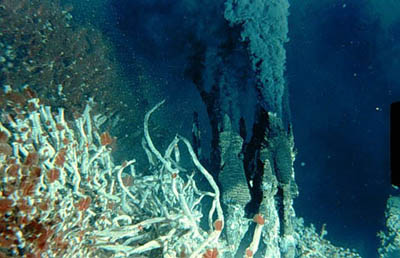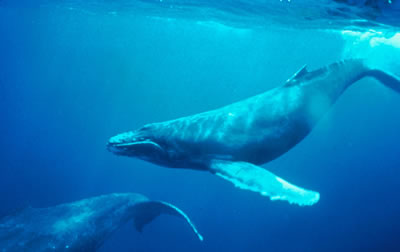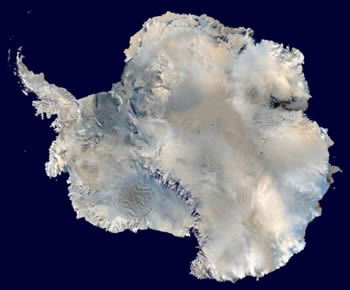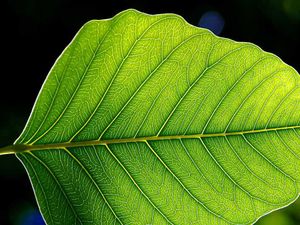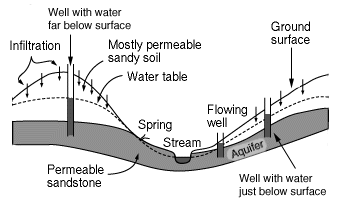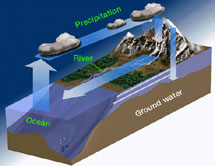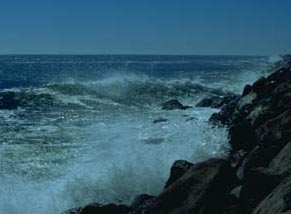Click on image for full size
Courtesy of NASA
Life in the Deep Ocean
The deep ocean is very cold, under high pressure, and always dark because sunlight can not get down that far. Less life can survive in the deep ocean than in other parts of the ocean because of these conditions. For some animals, food comes from the bodies of dead fish, dead plankton, and even dead whales that rain down from the open ocean waters above.
But there are two extreme environments in the deep sea where life is more abundant. These are cold seeps and hydrothermal vents. In these environments, food chains do not begin with plants or algae that make food from sunlight.
Cold seeps are areas where methane and hydrogen sulfide are released into the ocean. Cold seeps are home to clams, mussels, shrimp, crabs, bacteria, and tubeworms. For food, these animals depend on certain types of single-cell Archaea and Eubacteria microbes that live off the methane and hydrogen sulfide from the seep. There are cold seeps in many different places in the world’s ocean. They are often at the edges of continents.
Hydrothermal vents are another type of extreme environment in the deep sea. While most of the water in the deep ocean is close to freezing, the water at hydrothermal vents is very hot. It is heated by volcanic activity at tectonic spreading ridges. The hot water spews from holes in the crust called vents, looking like dark smoke because of the dissolved chemicals it picked up underground. Certain types of Archaea and Eubacteria microbes are able to turn the chemicals from the hot water into the energy they need to survive. Many other types of living things including fish, shrimp, giant tubeworms, mussels, crabs, and clams thrive in this environment as well. They, too, are adapted to the hot water and high pressure. Some of them, like mussels, clams, and the giant, 2-meter (6-foot) tubeworms, get the nutrition they need from microbes living within their bodies. Others, like shrimp and barnacles, eat the Archaea and Eubacteria.


